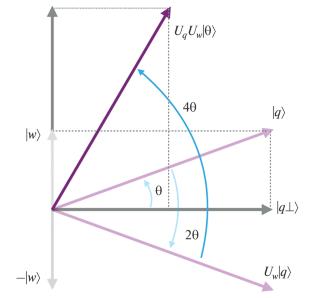Grover量子搜索算法的Grover-扩散算子唯一性
IF 0.5
4区 物理与天体物理
Q4 PHYSICS, PARTICLES & FIELDS
引用次数: 0
摘要
格罗弗-扩散算子的√N次重复是格罗弗量子选择算法的本质。对于大N,量子比特的相干时间T2限制了算法的应用。我们将探索可以设计哪些其他操作符来代替它以加速收敛。我们提出了一个用我们的SU2包实现的grover -扩散算子的c++ SU(2)模型。本文章由计算机程序翻译,如有差异,请以英文原文为准。


Grover-Diffusion Operator Unicity for the Grover Quantum-Search Algorithm
The repetition of Grover-diffusion operator the order of √N times is the essence of the Grover quantum selection algorithm. For large N the coherence time T2 of the qubits limits the application of the algorithm. We explore what other operators could be devised in its place to accelerate convergence. We present a C++ SU(2) model of the Grover-diffusion operator implemented using our SU2 package.
求助全文
通过发布文献求助,成功后即可免费获取论文全文。
去求助
来源期刊

Physics of Particles and Nuclei
物理-物理:粒子与场物理
CiteScore
1.00
自引率
0.00%
发文量
116
审稿时长
6-12 weeks
期刊介绍:
The journal Fizika Elementarnykh Chastits i Atomnogo Yadr of the Joint Institute for Nuclear Research (JINR, Dubna) was founded by Academician N.N. Bogolyubov in August 1969. The Editors-in-chief of the journal were Academician N.N. Bogolyubov (1970–1992) and Academician A.M. Baldin (1992–2001). Its English translation, Physics of Particles and Nuclei, appears simultaneously with the original Russian-language edition. Published by leading physicists from the JINR member states, as well as by scientists from other countries, review articles in this journal examine problems of elementary particle physics, nuclear physics, condensed matter physics, experimental data processing, accelerators and related instrumentation ecology and radiology.
 求助内容:
求助内容: 应助结果提醒方式:
应助结果提醒方式:


